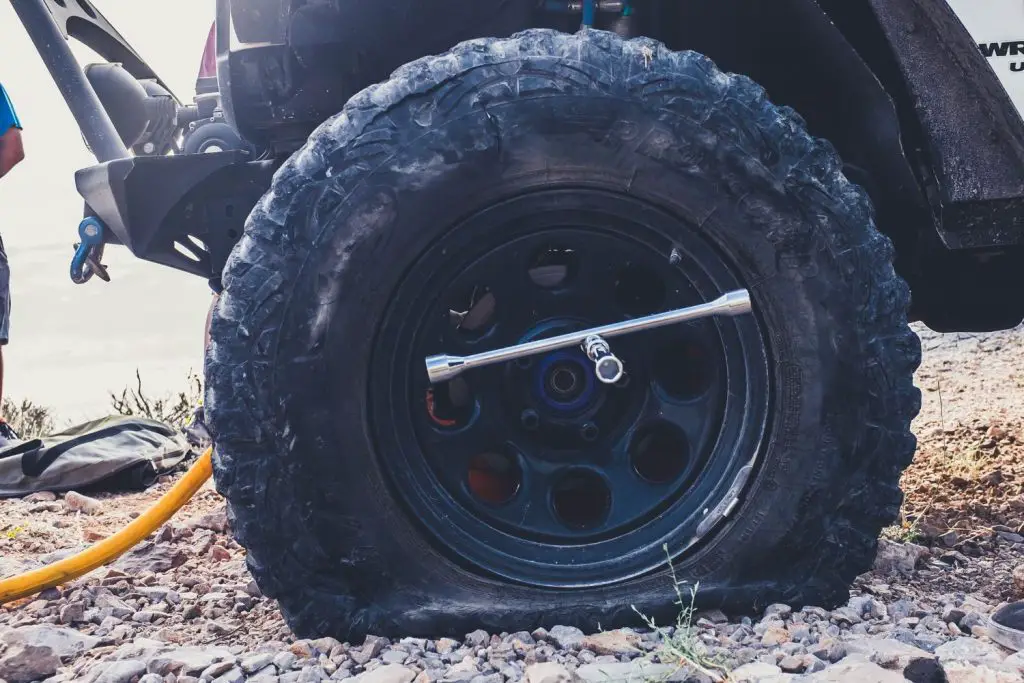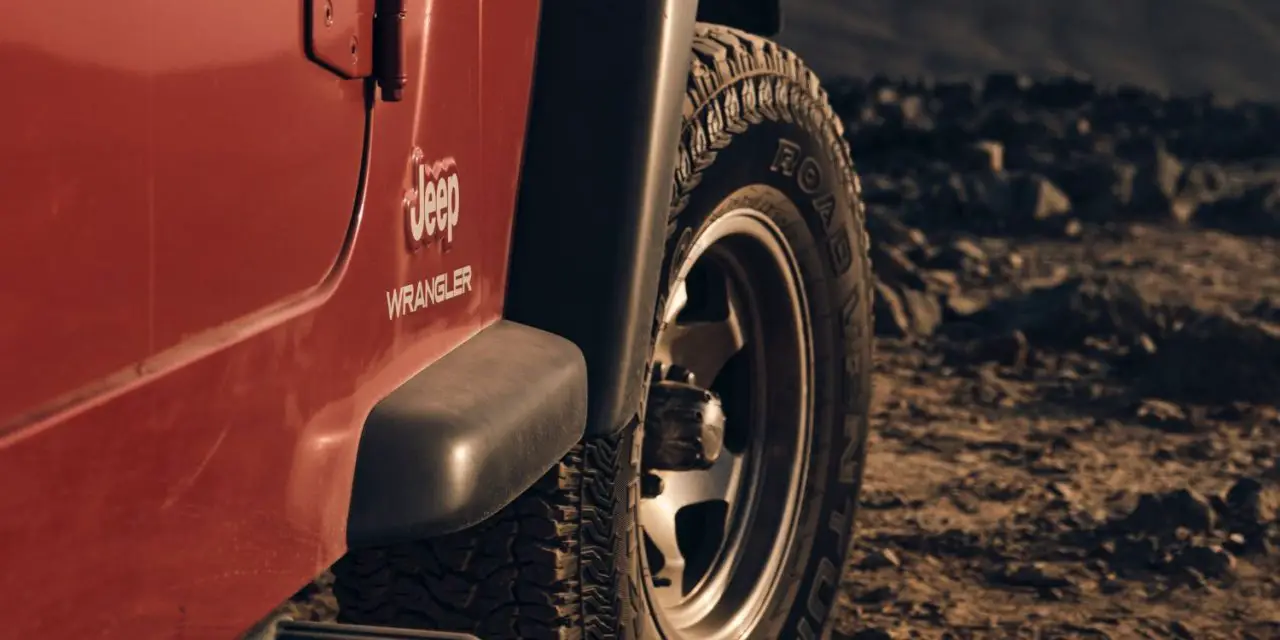I get commissions for purchases made through links in this post.
All-terrain tires are more puncture-resistant than regular tires, but that doesn’t mean nails, glass, and other sharp objects can’t cause problems. If your all-terrain tires are damaged, you must know how to handle the situation. After all, it’s the difference between going to a mechanic, getting towed, or staying off-road.
All-terrain tires can be patched with rubber cement or tire sealers. However, tire holes wider than ¼ in (0.6 cm) shouldn’t be patched because they’re prone to leaking air. Tire patches are rarely permanent, but they can last several months. Avoid repairing sidewall punctures in all-terrain tires.
In this article, we’ll explain when you should patch your all-terrain tires, how to patch them, and how long the patches last.
When Can All-Terrain Tires Be Patched?
All-terrain tires can be patched if they don’t have massive holes, damaged sidewalls, or worn treads. Nails and other narrow objects can be removed and fixed in most all-terrain tires. Furthermore, you can patch an all-terrain tire once it’s beyond the tapered area around the edges of the tread.
Let’s review each of these situations in which you can patch an all-terrain tire:
- You can patch an all-terrain tire if the hole is smaller than a quarter of an inch (0.6 cm). When the puncture area is too big, there’s a greater chance of dealing with air leaks. The vast majority of tire plugs can’t handle anything over ¼ of an inch (0.6 cm), so it’s best to reach for the spare tire at this point.
- Most tread punctures can be patched if the tread is in good condition, but avoid patching the sidewalls. Sidewall punctures are usually irreparable on most tires. While all-terrain tires don’t puncture easily due to their impressive construction, they’re useless if air leaks from the side.
- If the tread is worn on an all-terrain tire, you might be unable to patch it. Low tread makes it very difficult for tire plugs, sealers, and rubber cement to grip the material. It also means your tires are near the end of their longevity, so they should have the tread replaced if the rest of the Tire is in good shape.
- The puncture must be on the tire’s flat portion to be patched. Every tire tapers near the edge before it reaches the sidewall. If your all-terrain tire has a puncture on the tapered side, it won’t hold a patch for very long. Your best bet is to choose a spare tire and get the all-terrain tire replaced as quickly as possible.
There are many ways to patch all-terrain tires. That said, patching damaged sidewalls or tapered edges will last up to a few minutes (if it even makes it that far). If you notice holes in the previously mentioned areas of the tire, it’s best to replace the tire with a spare and head to a repair shop to replace it with a like-for-like one (and you can buy your new tire here) (Paid Link).

How To Patch All-Terrain Tires
To patch all-terrain tires, follow this step-by-step process:
- Remove the puncturing object from the tire with pliers. Take care not to damage the tire in the process. Don’t press the removal tool against the tire. You can also use the nail remover on the back of a hammer in a pinch. Either way, remove the entire object before patching the tire.
- Ream the tire hole with a tire reamer to level the hole and remove excess debris. We suggest using the OEM Tools Tire Repair Kit (Paid Link). It has a reamer, plugger, several plugs, and a tube of rubber cement. Twist the reamer in the hole to clear it out, then proceed to the remaining steps.
- Place a tire plug around a tire plugging tool, then push the plug into the hole. The tip of the plugging tool should be in the center of the plug. Slowly push the plug into the tire until there’s about ½ in (1.27 cm) exposed. You’ll likely have two parts of the plug sitting out of the tire since it comes in a strip form.
- Cut off the extra portion of the tire plug hanging out of the tire. Make sure you don’t puncture the Tire, though. Use a thin pair of scissors to get as close to the rubber as possible. You can use rubber cement to flatten the remaining portion since it will likely be less than 1/16th of an inch (1.6 mm).
- Layer the rubber cement over the tire plug and let it cure. Use a microfiber cloth or a putty knife to remove the excess cement. Ensure the adhesive doesn’t touch the ground; keep the tire in the same position as when you applied the glue until it dries. This will prevent the rubber cement from sticking to the ground.
It is recommended to get as flush of a cut from the tire plug as possible. This will prevent the plug and rubber cement from shifting while driving the vehicle. Additionally, it’ll allow the rubber cement to cure much easier without excess humidity getting on the solution.
- COLD DAYS AND FLAT TIRES: WHY DO TIRES GO FLAT WITH LOWER TEMPS?
- COMPLETE GUIDE TO YOUR TIRE SIZE (WITH INFOGRAPHIC AND IMAGES)
- TRUCK TIRES SHOULDN’T BE USED ON TRAILERS: TOP 4 REASONS WHY

Are All-Terrain Tire Patches Permanent Fixes?
All-terrain tire patches are rarely permanent, but they can work for months or years. Rubber cement lasts much longer than other tire sealers. The puncture’s size, the patch’s quality, and the hole’s location determine how long the patch will stay on an all-terrain tire.
The only way to guarantee a tire patch will be permanent is to ensure it’s entirely on the tread area. They also recommend bringing it to a professional since a warranty often backs their work.
Conclusion
While not every all-terrain tire can be patched, keeping a rubber cement patch kit on is a good idea. This will ensure you don’t have to call a tow truck or get stuck in the middle of nowhere. Patching an all-terrain tire is very similar to fixing a regular tire. The primary difference is the quality and amount of material used to seal the hole.





